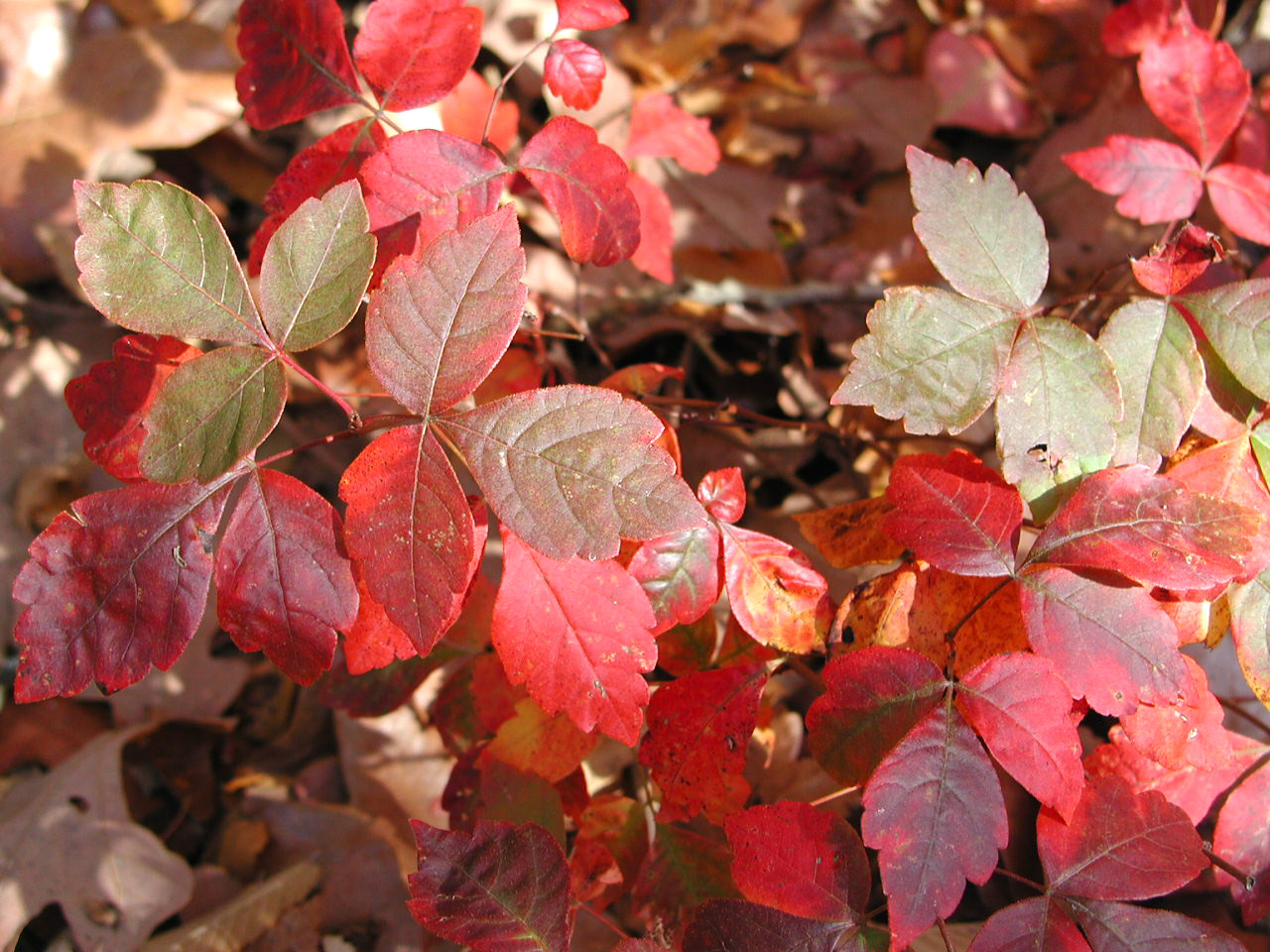Sumacs aflame in the fall
Contact
University of Arkansas System Division of Agriculture
Cooperative Extension Service
2301 S. University Ave.
Little Rock, AR 72204

Sumacs aflame in the fall
Driving the roadways this time of year is always a delight as the summer greenery transitions to the subtle beauty of fall. The transition is a gradual one, coming on a little bit each day as reds, yellows and oranges replace the green of summer. Leading the color change on many of our roadways are the sumacs, shrubby creepers that are the Rodney Dangerfields of the plant kingdom: They just get no respect.
Sumacs (in the genus Rhus) are woody shrubs and small trees of the cashew family with wide distribution in North America, Southern Europe, Asia and Africa. It represents one of those confusing groups of plants that has either several hundred species or 75, depending on how finely the distinctions are drawn. I prefer the smaller number because that classification scheme moves poison ivy (Toxicodendron radicans) to a different genus. But not everyone agrees with this change so the older name, Rhus radicans, is still often used for this vile plant. The true sumacs cause no dermatitis that I’m aware of and the sometimes-mentioned poison sumac (which does not occur in Arkansas) belongs in the genus Toxicodendron, not Rhus.
The two most commonly seen sumacs in Arkansas are winged sumac (Rhus copallina) and smooth sumac (R. glabra). Both form colonies along the roadways, in old fields and at the edge of woodlands with the thicket often reaching heights of five to 10 feet but spreading 100 feet or more down the way. This spreading form is most often seen in sunny, usually dry sites where the network or rhizomes move the colony quickly through disturbed soils such as along roadways. In partially shaded sites or where the soil is better, the colony often doesn’t spread so far and individual stems grow taller, sometimes making picturesque small trees 15 to 20 feet tall.
Differentiating between these two sumacs is easy by looking at the compound leaves. Winged sumac has a well-defined wing along the midrib (rachis) of the leaf, while no such structure is found in smooth sumac. Both have good fall color with shades of purple, red, orange and sometimes yellow. Also, the new shoots of winged sumac are covered in fine hairs while smooth sumac is glabrous – or without hairs, thus providing an easy way to identify the two plants in the winter when the leaves are gone.
The third common sumac in Arkansas is aromatic sumac (R. aromatica), a smaller plant that seldom grows taller than two or three feet in height with proportionally smaller colonies. Like its two larger cousins, this plant is found in every county of the state but it hangs back into shadier sites or grows on steep, often rocky hillsides. And it colors later in the year, often not producing its nice orange display until many of the oaks surrounding it have dropped their leaves. And instead of the dozen to 20 leaflets found on the larger sumacs, fragrant sumac only has three leaflets, confusing some into thinking it could be poison ivy or poison oak.
Sumacs are dioecious with male and female plants. The red clusters of berries are distinctive in late summer and persist into winter. Many birds feed on them, especially as winter approaches. They are also the source of pink “lemonade” because of their strong lemony taste. Sumac lemonade is best made from early-season seed heads when the lemony flavor is at its strongest. Though not an especially good source of vitamin C, it is said to have antioxidant properties.
Maybe because they are so common and because they are hard to keep from spreading, sumacs are seldom seen in landscapes. The staghorn sumac (R. typhina) is a northeastern species that grows in Missouri, but not Arkansas, and has several named selections based on the finely cut leaf segments. Low Grow – an aromatic sumac selection – is offered but it hardly lives up to its name in cultivation, often reaching heights of five feet. But, even if you don’t have room in your own garden for these robust shrubs, they should be appreciated and enjoyed for the beauty they bring to our roadways each autumn.
